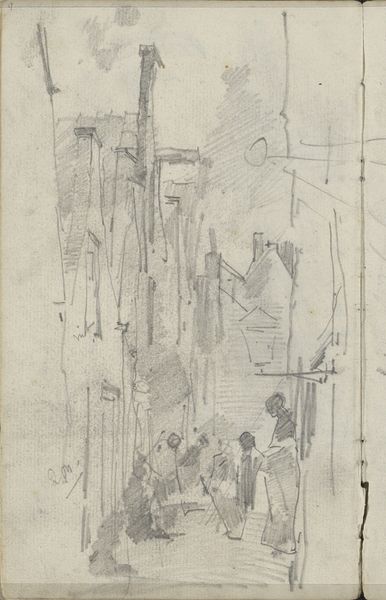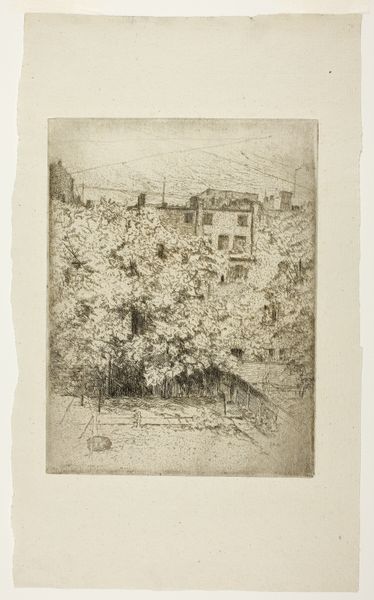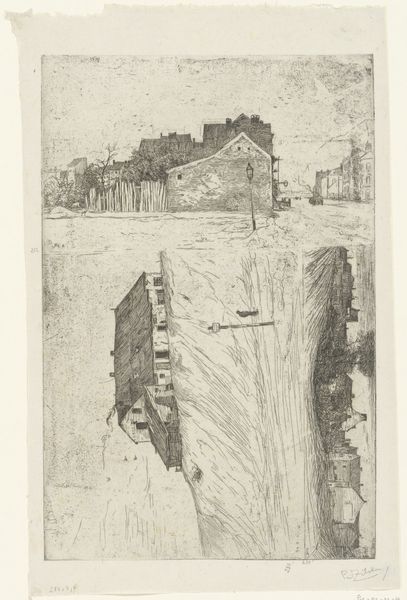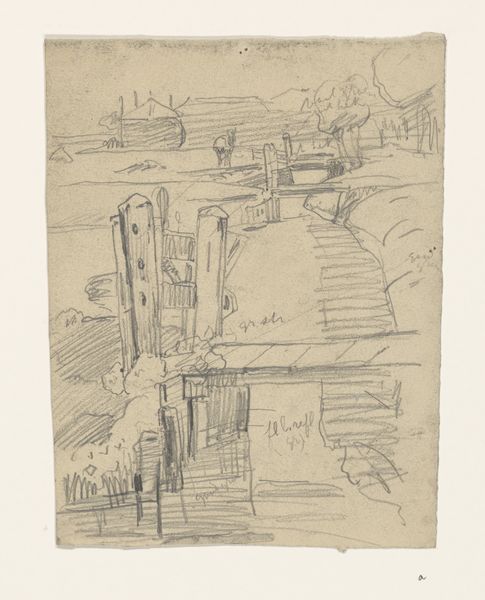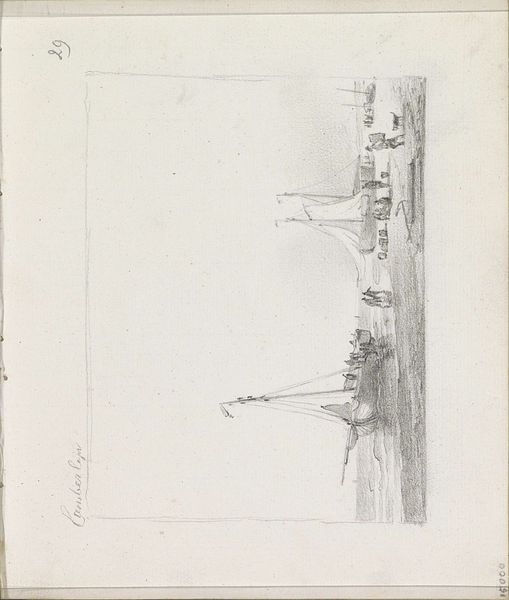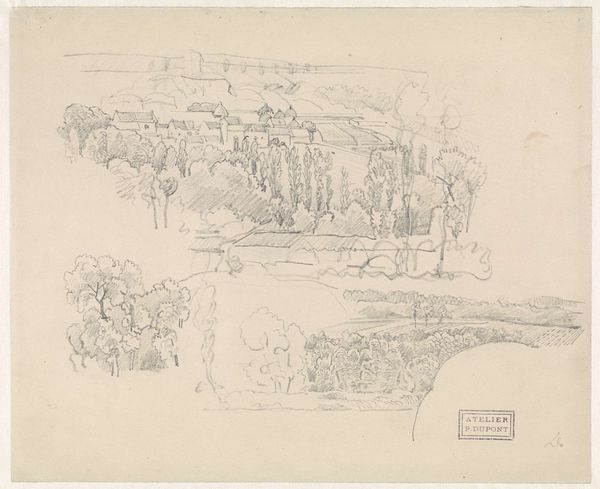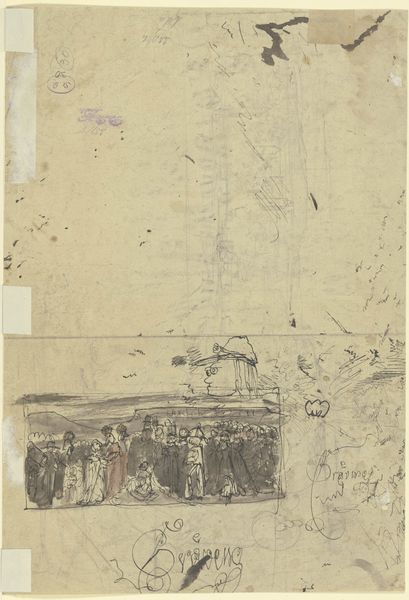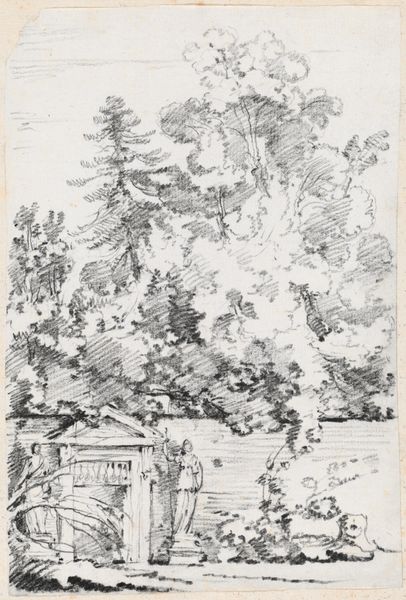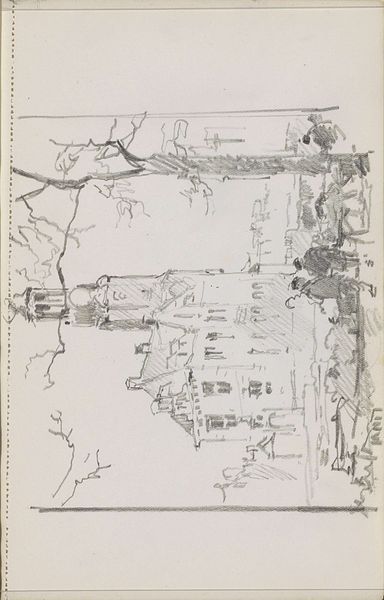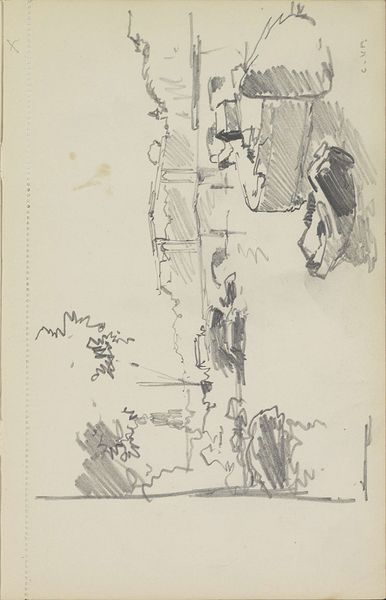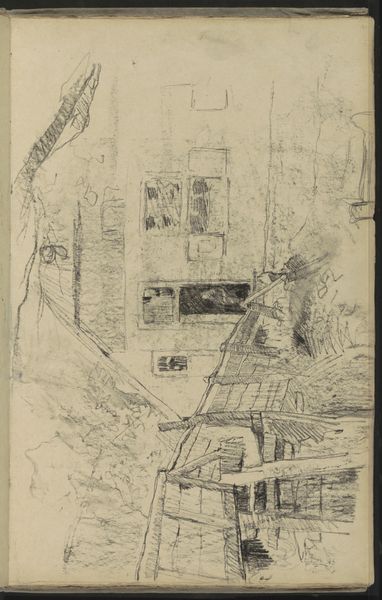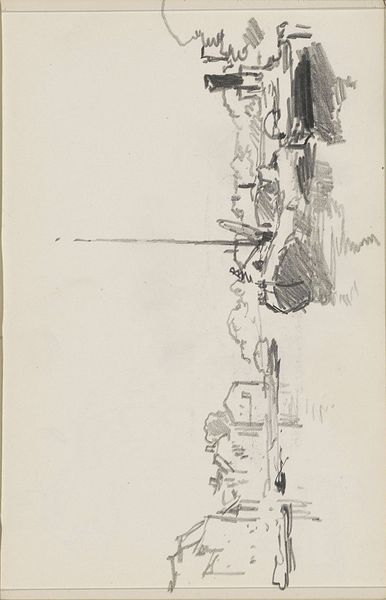
drawing, print, paper, ink, pencil, pen
#
portrait
#
architectural sketch
#
landscape illustration sketch
#
drawing
#
quirky sketch
#
mechanical pen drawing
# print
#
paper
#
personal sketchbook
#
ink
#
idea generation sketch
#
sketchwork
#
pen-ink sketch
#
pencil
#
line
#
pen
#
cityscape
#
storyboard and sketchbook work
#
academic-art
#
realism
#
initial sketch
Dimensions: height 226 mm, width 156 mm
Copyright: Rijks Museum: Open Domain
Editor: This is Theo van Hoytema's "Menu Card for the Leiden Savings Bank," created sometime between 1878 and 1917. It's a print made from ink and pencil on paper, and I'm immediately struck by how it blends an outdoor scene with a peek inside the bank. What's your take on how the artist might be representing the bank in the community? Curator: Well, as a historian, what catches my eye is how the artwork depicts the Savings Bank not just as a financial institution, but as an integrated part of daily life and civic engagement. We see figures lining up *inside*, possibly making deposits or withdrawals, and a street-level view *outside*, so it becomes visually part of the cityscape. What is especially intriguing is the "menu" typography seemingly placed over the canopy of the tree. Do you think there is irony here? Editor: That's a sharp observation about daily life and yes, it feels tongue in cheek, to subtly connect monetary sustenance with nutritional sustenance through the image of the tree canopy! So, it’s almost like the bank is presented as another essential "ingredient" for living, just like food. Curator: Precisely! Van Hoytema might be subtly commenting on the growing importance of financial institutions in shaping everyday experiences, even shaping urban development and public life in Leiden. It almost seems like the modern Dutch are investing in banks, as the canopy offers future succor, while the base level of the bank promotes more basic daily bread. The very composition places the bank, in a critical, intermediary zone of urban activity. Editor: That really makes me think about how the design invites viewers to see the bank not just as a place for transactions but as a vital artery connecting residents to economic opportunities. Curator: Indeed. It’s also worth noting that artists at the time were keenly aware of how their work contributed to building public image and even to shaping perceptions of financial stability. This little drawing suggests something much larger about the cultural significance of banking during the period. Editor: I hadn't considered that—how art itself plays a part in reinforcing these institutions! Thanks, I’m seeing this piece with entirely new eyes. Curator: And I see now more acutely, thanks to you, the artistic license and the potential criticism embedded in a work commissioned by this bank.
Comments
No comments
Be the first to comment and join the conversation on the ultimate creative platform.
